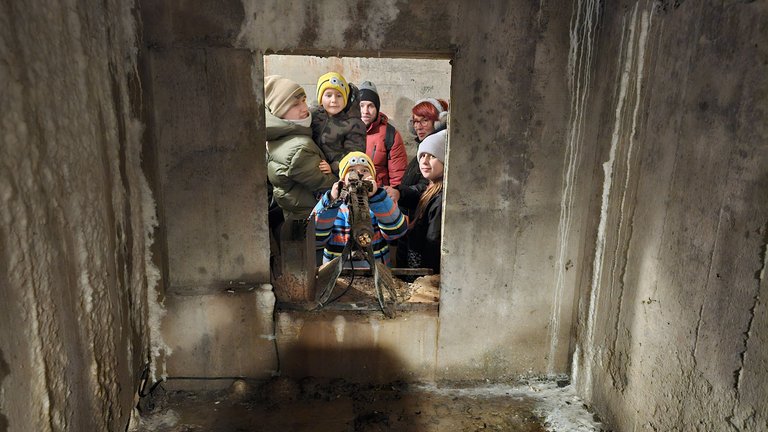
The Owl Mountains hide many secrets, and one of the largest is the "Riese" complex – the largest military investment of the Third Reich, the construction of which was interrupted in 1945. At the heart of this project are the Walim Adits, also known as the "Rzeczka" complex. This place not only fascinates with its history, but also forces you to reflect on the tragic fate of thousands of people who died during its construction.
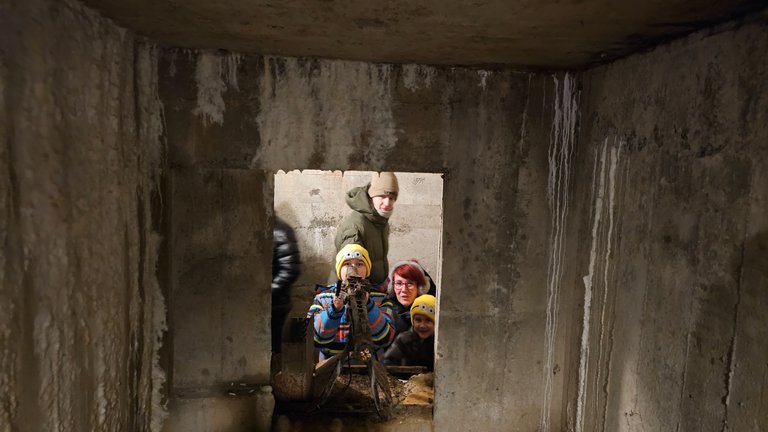
Our family trip to the Walim Adits was a unique experience. It was not an ordinary "trip" – rather a journey into the past, which evokes reflection, respect and difficult questions about the nature of human suffering.
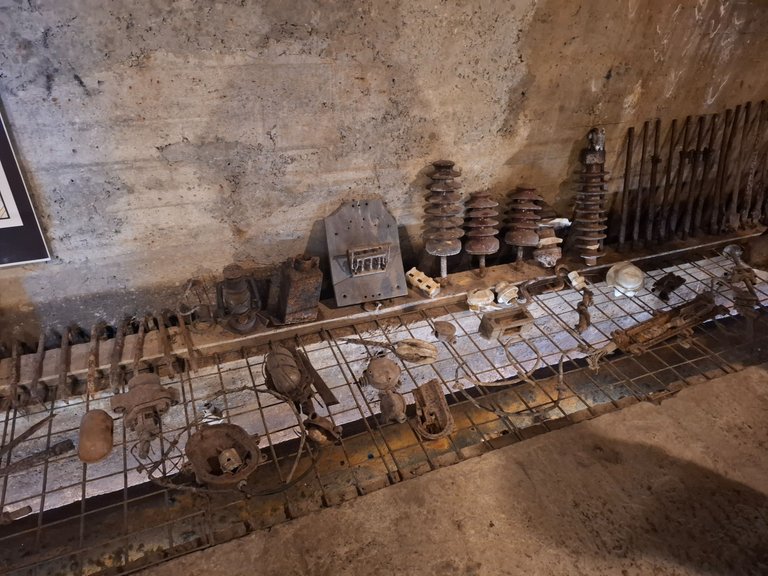
The history of the "Riese" complex – a secret hidden in the Owl Mountains
The "Riese" complex (German for "giant") was built in the years 1943–1945 in the Owl Mountains in Lower Silesia. It was one of the largest and most mysterious projects of the Third Reich. The German army committed enormous financial, human and technological resources to implement its plans. However, to this day we do not know for sure what the purpose of these underground corridors was supposed to be.
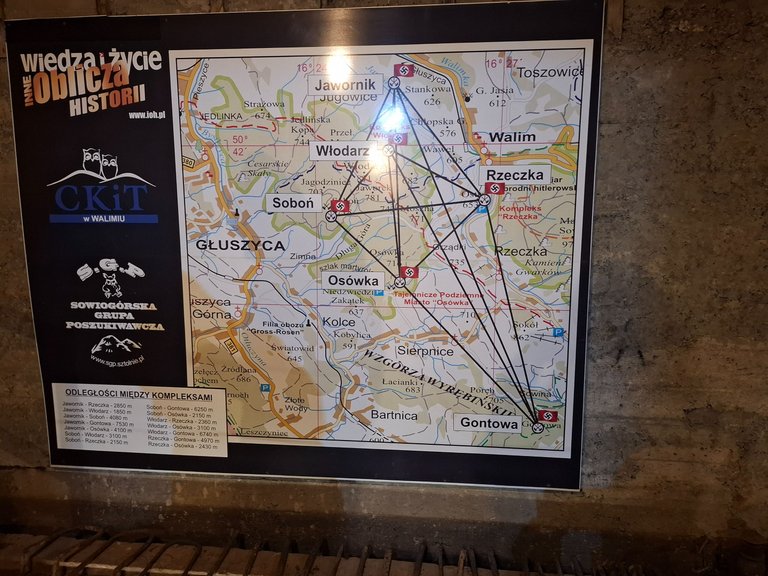
The most popular theories say that these were supposed to be the headquarters for Adolf Hitler and the command of the Third Reich. Other hypotheses point to the construction of armaments factories, research laboratories or air raid shelters.
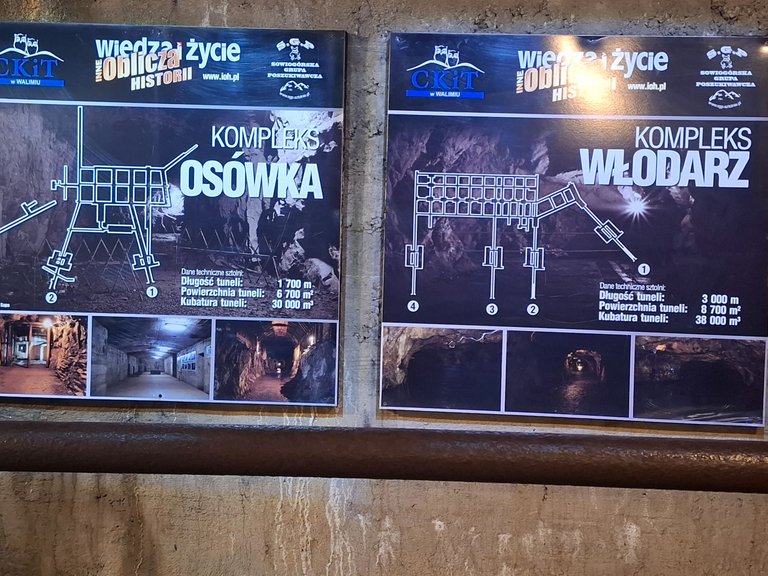
The construction of "Riese" was extremely intensive and took place at the cost of thousands of human lives. Concentration camp prisoners and forced laborers were forced to carry them out. In inhumane conditions, they dug tunnels in hard rocks, often with bare hands. Hunger, disease and brutal treatment were commonplace. For many of them, "Riese" became a place of eternal rest.
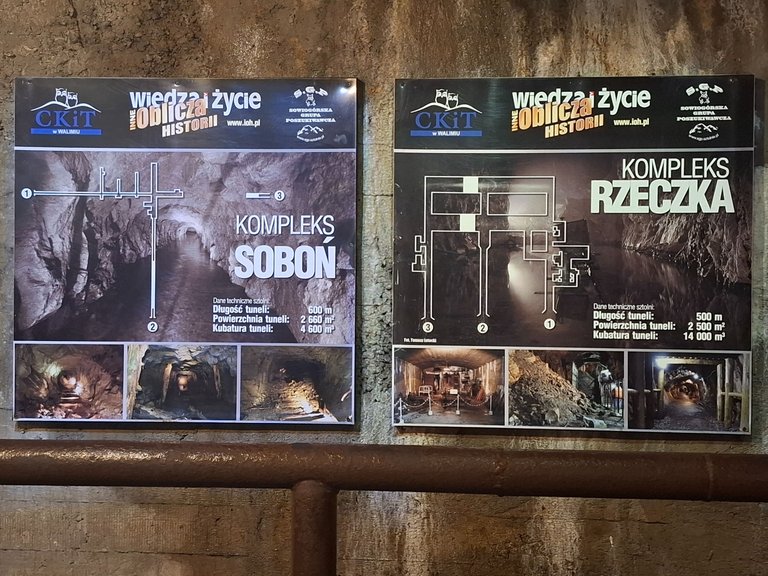
The Walim Adits are one of the seven complexes that are part of "Riese". Today, they are the only ones open to the public. It is not only a tourist attraction, but above all a place of remembrance that teaches respect for the past.

The beginning of our expedition
We arrived at the adits early in the morning. It was a cold winter morning, but the weather was sunny, which added to the charm of the surrounding mountains. Already at the entrance, we felt that this place is different from other tourist attractions. A warning board informed that the tour could be difficult for children, both because of the long stories and the difficult historical content.

As parents, we decided to take a risk. Our children, although of different ages, often accompany us in learning about difficult history and culture. Wiktor, our youngest, is usually a volcano of energy, and Alex struggles with aphasia, which makes it difficult for him to communicate. We were all the more curious to see how they would react to this challenge.
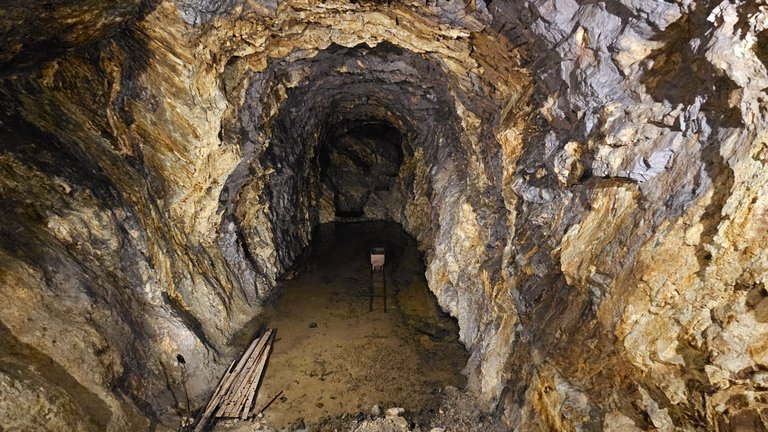
A Guide That Brings History to Life
The tour took place in a group, under the care of a guide whose passion for history and ability to tell stories made a great impression on us. From the very beginning, he emphasized that the Walim Adits are not a place "for everyone". It is a place of remembrance that requires concentration, reflection and understanding of the historical context.

The guide's narration was full of details. He told the story of how the Germans had transformed the Owl Mountains into a gigantic construction site, using prisoners and forced laborers. He emphasized their suffering, exhaustion and unimaginable difficulties they had to face.
One of the most poignant elements was the sound simulation that accompanied the story. We heard the sounds of people being brought in, dogs barking, and even a simulation of bombing. These sounds added authenticity to the narrative and made us better imagine what life was like in this place.
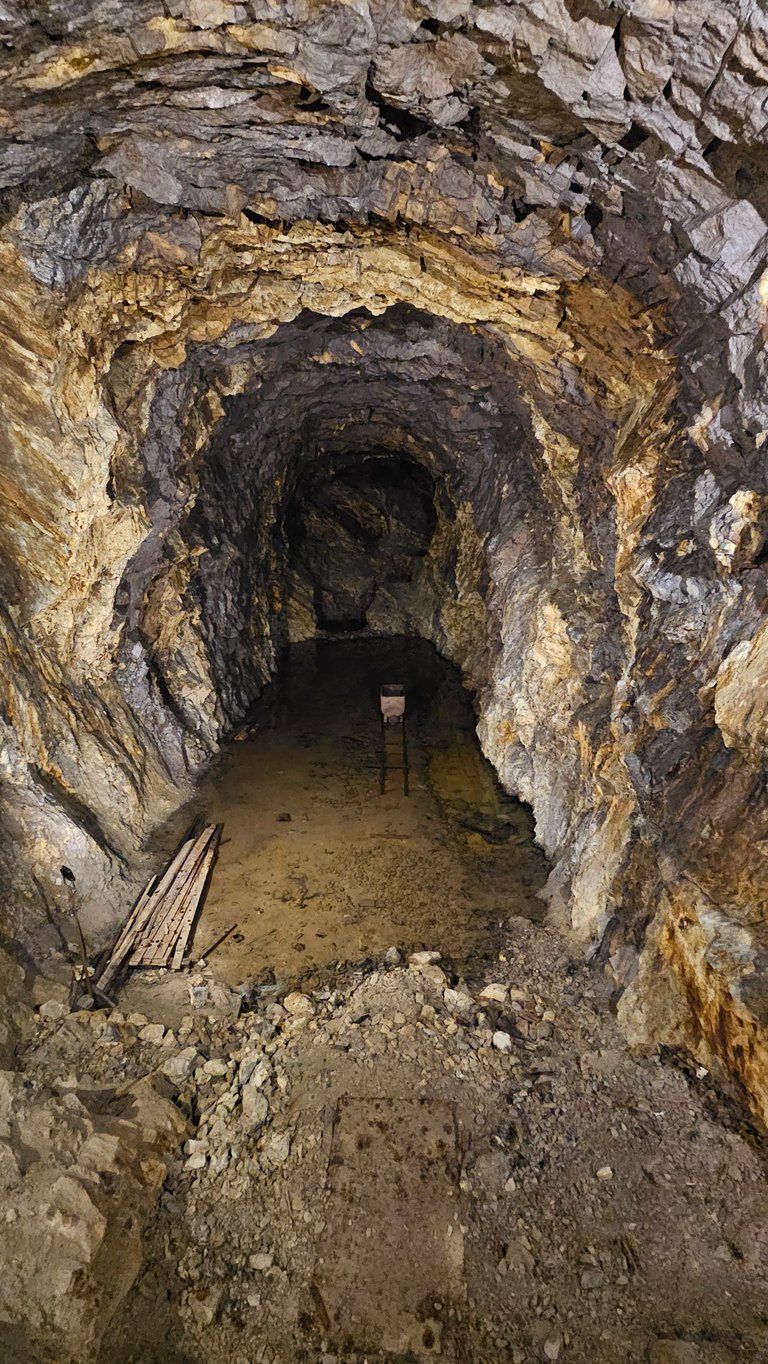
Exhibition of paintings – a testimony of human suffering
A special moment was visiting the exhibition of paintings by one of the former prisoners of the camp. These drawings were not only an artistic record of history, but also a testimony to unimaginable suffering.
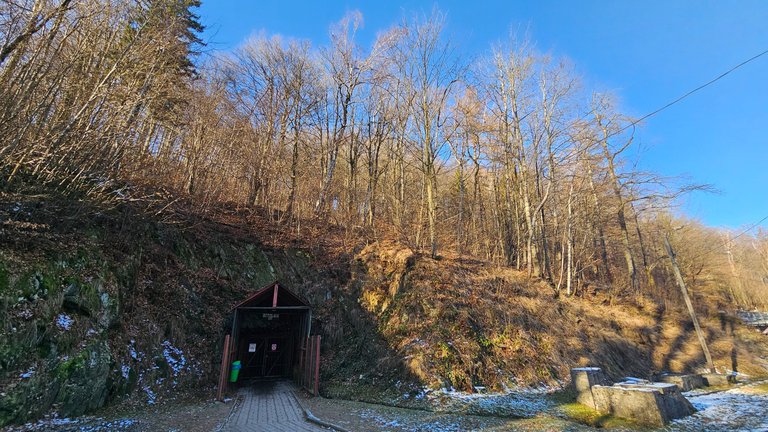
Some of the paintings depicted scenes so drastic that it was difficult to look at them. They showed exhausted prisoners, the brutality of the guards and inhumane working conditions. They were raw, blunt, but at the same time full of emotions, which allowed us to better understand the tragedy of those who died here.
Our children reacted with seriousness and concentration. Wiktor, who is usually full of energy, stood motionless here, staring at the paintings. Alex, who struggles with communication difficulties on a daily basis, absorbed the atmosphere of the place and the images with great attention.
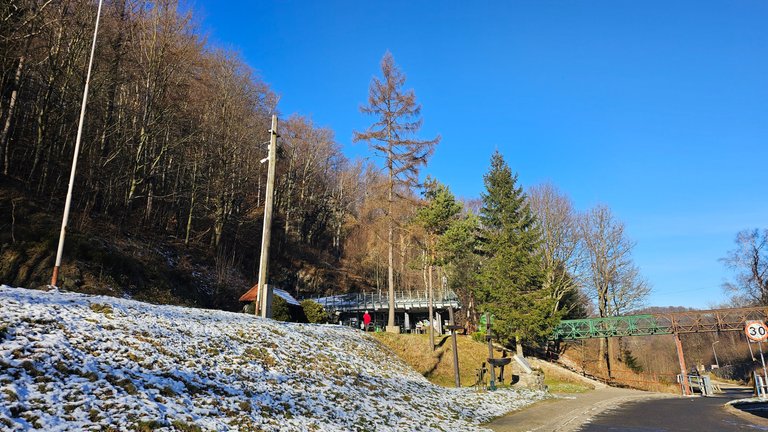
Reflections that will stay with us forever
Walking through the cool, damp corridors, it was impossible not to think about the enormous suffering that people forced to work in this place had to endure. Their story is a warning and a reminder of how important it is to cherish the memory of the past.

For our family, it was a moment of reflection on human nature and what a man is able to do to another man. Visiting the Walim Adits was also an opportunity to talk to children about history, empathy and responsibility.
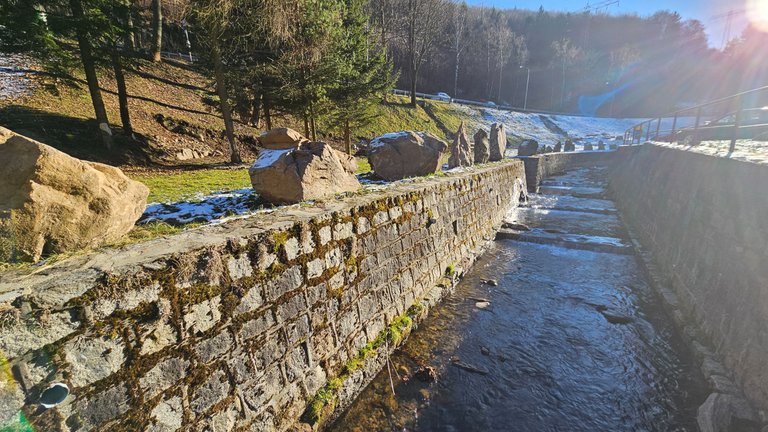
Landscapes full of contrasts
After leaving the adit, we had a moment to take a breath and admire the beauty of the surrounding nature. The Owl Mountains were covered with snow, and icicles hung from the mountain slopes. It was like a breath after the weight of emotions that accompanied us during the tour.
The contrast between the raw history of the adit and the beauty of nature was striking. He reminded us that even in places marked by tragedy one can see the beauty of the world.
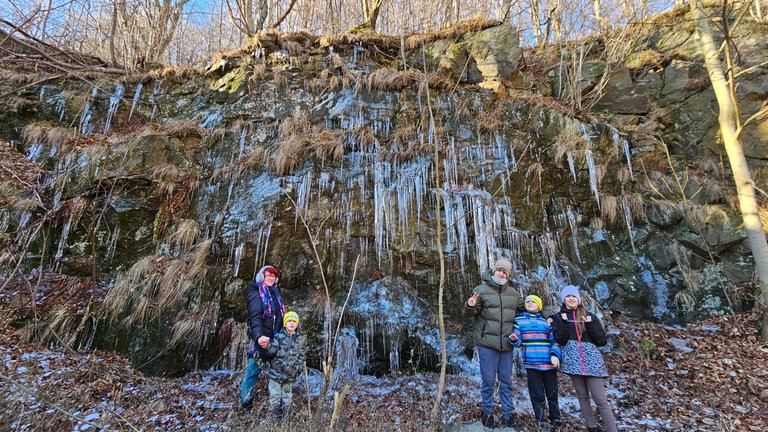
Our expedition to the Walim Adits was an extraordinary experience. It was not only a history lesson, but also a moment of reflection on the past, reflection on human suffering and a reminder of how important it is to remember those who suffered in the name of the ideology of war.
The children were praised by the guide for their focus and commitment. It was a moment of pride for us, but also proof that even the youngest can understand and appreciate the importance of such places.
We encourage everyone who has the opportunity to visit the Walim Adits to do so with an open mind and readiness for difficult emotions. It is a place that allows you to better understand the past and teaches how important it is to take care of historical memory.

PL:
Podziemia historii – Rodzinna wyprawa do Sztolni Walimskich
Góry Sowie kryją wiele tajemnic, a jedną z największych jest kompleks „Riese” – największa inwestycja militarna III Rzeszy, której budowa została przerwana w 1945 roku. W sercu tego projektu znajdują się Sztolnie Walimskie, znane również jako kompleks „Rzeczka”. To miejsce nie tylko fascynuje swoją historią, ale także zmusza do refleksji nad tragicznymi losami tysięcy ludzi, którzy zginęli podczas jego budowy.
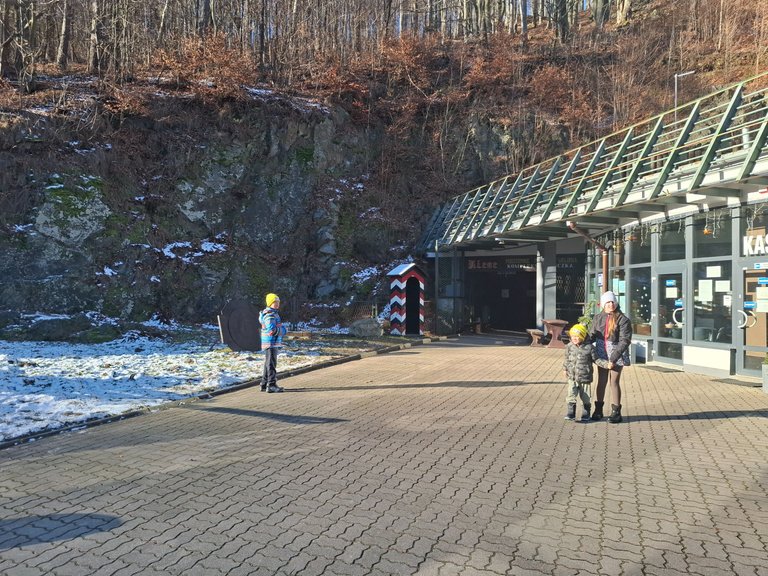
Nasza rodzinna wyprawa do Sztolni Walimskich była wyjątkowym doświadczeniem. Nie była to zwykła „wycieczka” – raczej podróż w przeszłość, która wywołuje zadumę, szacunek i niełatwe pytania o naturę ludzkiego cierpienia.
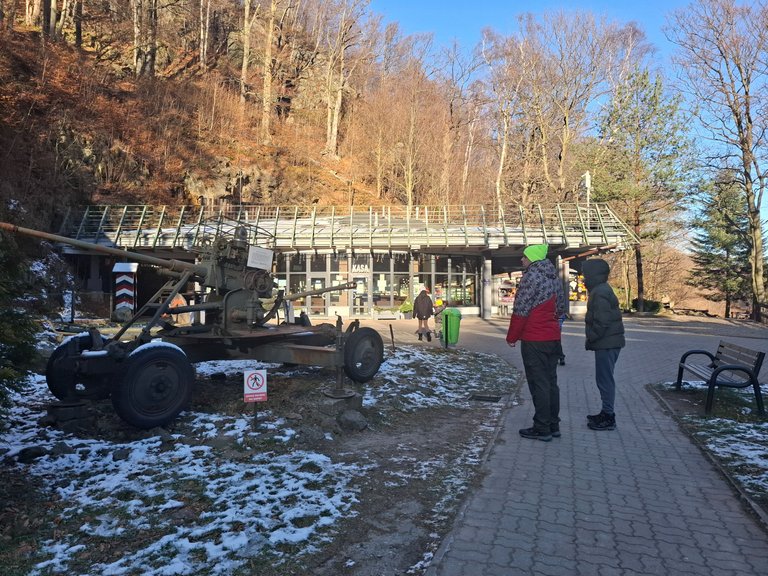
Historia kompleksu „Riese” – tajemnica ukryta w Górach Sowich
Kompleks „Riese” (po niemiecku „olbrzym”) powstawał w latach 1943–1945 w Górach Sowich na Dolnym Śląsku. Był to jeden z największych i najbardziej tajemniczych projektów III Rzeszy. Niemiecka armia zaangażowała ogromne środki finansowe, ludzkie i technologiczne, aby zrealizować swoje plany. Jednak do dziś nie wiemy na pewno, jakie miało być przeznaczenie tych podziemnych korytarzy.

Najbardziej popularne teorie mówią, że miały to być kwatery główne dla Adolfa Hitlera i dowództwa III Rzeszy. Inne hipotezy wskazują na budowę fabryk zbrojeniowych, laboratoriów badawczych czy schronów przeciwlotniczych.
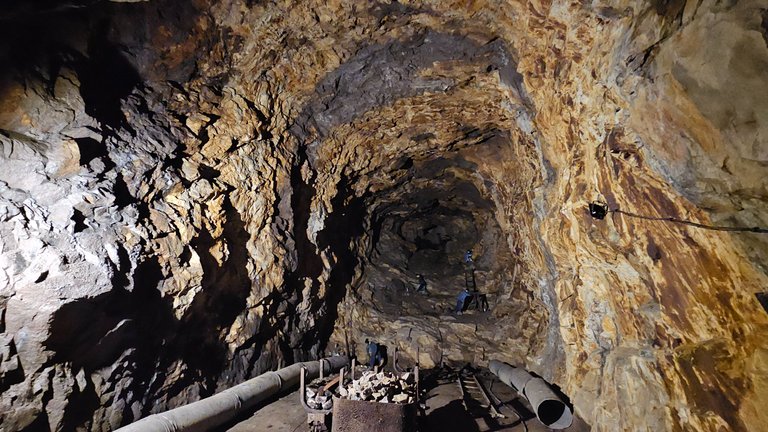
Prace przy budowie „Riese” były niezwykle intensywne i odbywały się kosztem tysięcy ludzkich istnień. Do ich realizacji zmuszono więźniów obozów koncentracyjnych oraz robotników przymusowych. W nieludzkich warunkach drążyli tunele w twardych skałach, często gołymi rękami. Głód, choroby i brutalne traktowanie były codziennością. Dla wielu z nich „Riese” stało się miejscem wiecznego spoczynku.
Sztolnie Walimskie są jednym z siedmiu kompleksów wchodzących w skład „Riese”. Dziś, jako jedyne z nich, są udostępnione do zwiedzania. To nie tylko atrakcja turystyczna, ale przede wszystkim miejsce pamięci, które uczy szacunku do przeszłości.
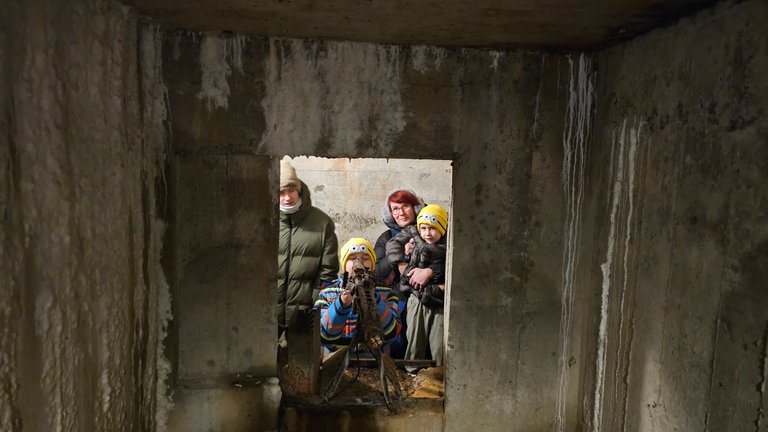
Początek naszej wyprawy
Pod sztolnie dotarliśmy wczesnym rankiem. Był mroźny, zimowy poranek, ale pogoda była słoneczna, co dodawało uroku okolicznym górom. Już przy wejściu poczuliśmy, że miejsce to różni się od innych atrakcji turystycznych. Tablica ostrzegawcza informowała, że zwiedzanie może być trudne dla dzieci, zarówno ze względu na długie opowieści, jak i trudne treści historyczne.
Jako rodzice postanowiliśmy zaryzykować. Nasze dzieci, choć w różnym wieku, często towarzyszą nam w poznawaniu trudnej historii i kultury. Wiktor, nasz najmłodszy, to zwykle wulkan energii, a Alex zmaga się z afazją, która utrudnia mu komunikację. Tym bardziej byliśmy ciekawi, jak zareagują na to wyzwanie.
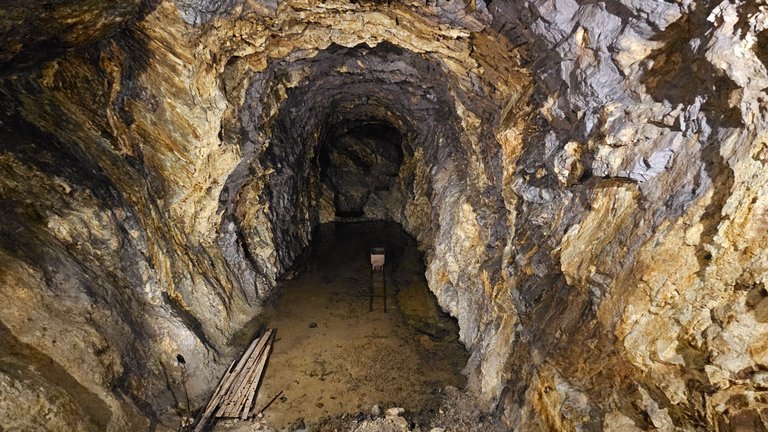
Przewodnik, który ożywia historię
Zwiedzanie odbywało się w grupie, pod opieką przewodnika, którego pasja do historii i umiejętność snucia opowieści zrobiły na nas ogromne wrażenie. Już na początku podkreślił, że Sztolnie Walimskie to nie miejsce „dla każdego”. To miejsce pamięci, wymagające skupienia, refleksji i zrozumienia kontekstu historycznego.
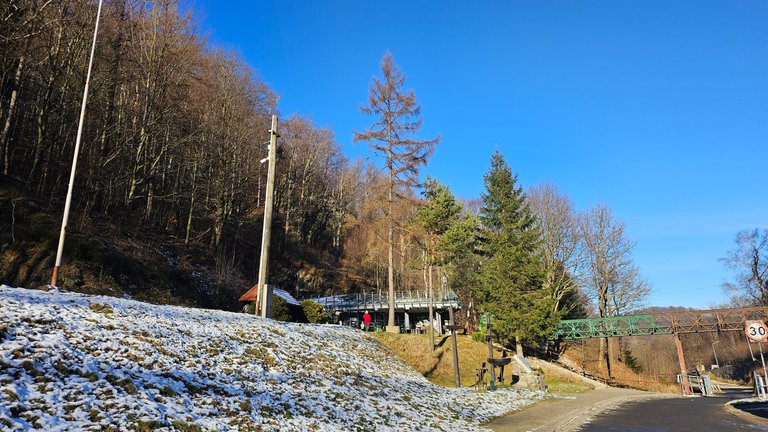
Narracja przewodnika była pełna szczegółów. Opowiadał o tym, jak Niemcy przekształcili Góry Sowie w gigantyczny plac budowy, wykorzystując więźniów i robotników przymusowych. Podkreślał ich cierpienie, wyczerpanie i niewyobrażalne trudności, z jakimi musieli się zmierzyć.
Jednym z najbardziej przejmujących elementów była symulacja dźwiękowa, która towarzyszyła opowieści. Słyszeliśmy odgłosy przywożonych ludzi, szczekanie psów, a nawet symulację bombardowania. Dźwięki te dodawały narracji autentyczności i sprawiały, że mogliśmy lepiej wyobrazić sobie, jak wyglądało życie w tym miejscu.

Wystawa obrazów – świadectwo ludzkiego cierpienia
Szczególnym momentem było zwiedzanie wystawy obrazów jednego z byłych więźniów obozu. Te rysunki były nie tylko artystycznym zapisem historii, ale także świadectwem niewyobrażalnego cierpienia.

Niektóre z obrazów przedstawiały sceny tak drastyczne, że trudno było na nie patrzeć. Ukazywały wycieńczonych więźniów, brutalność strażników i nieludzkie warunki pracy. Były surowe, dosadne, ale jednocześnie pełne emocji, które pozwalały lepiej zrozumieć tragedię tych, którzy tutaj zginęli.
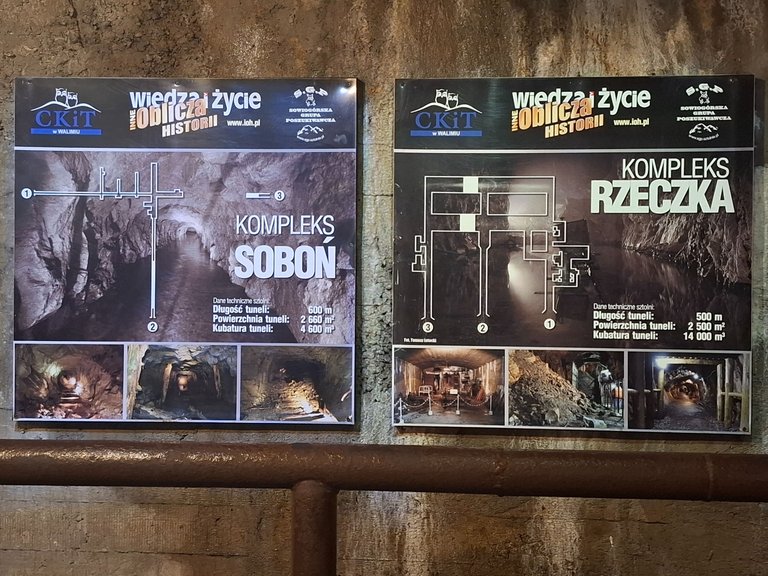
Nasze dzieci zareagowały z powagą i skupieniem. Wiktor, który zwykle jest pełen energii, tutaj stał nieruchomo, wpatrzony w obrazy. Alex, który na co dzień zmaga się z trudnościami w komunikacji, chłonął atmosferę miejsca i obrazy z wielką uwagą.

Refleksje, które zostaną z nami na zawsze
Spacerując po chłodnych, wilgotnych korytarzach, nie sposób było nie zastanowić się nad tym, jak ogromne cierpienie musieli znosić ludzie zmuszeni do pracy w tym miejscu. Ich historia to przestroga i przypomnienie, jak ważne jest pielęgnowanie pamięci o przeszłości.
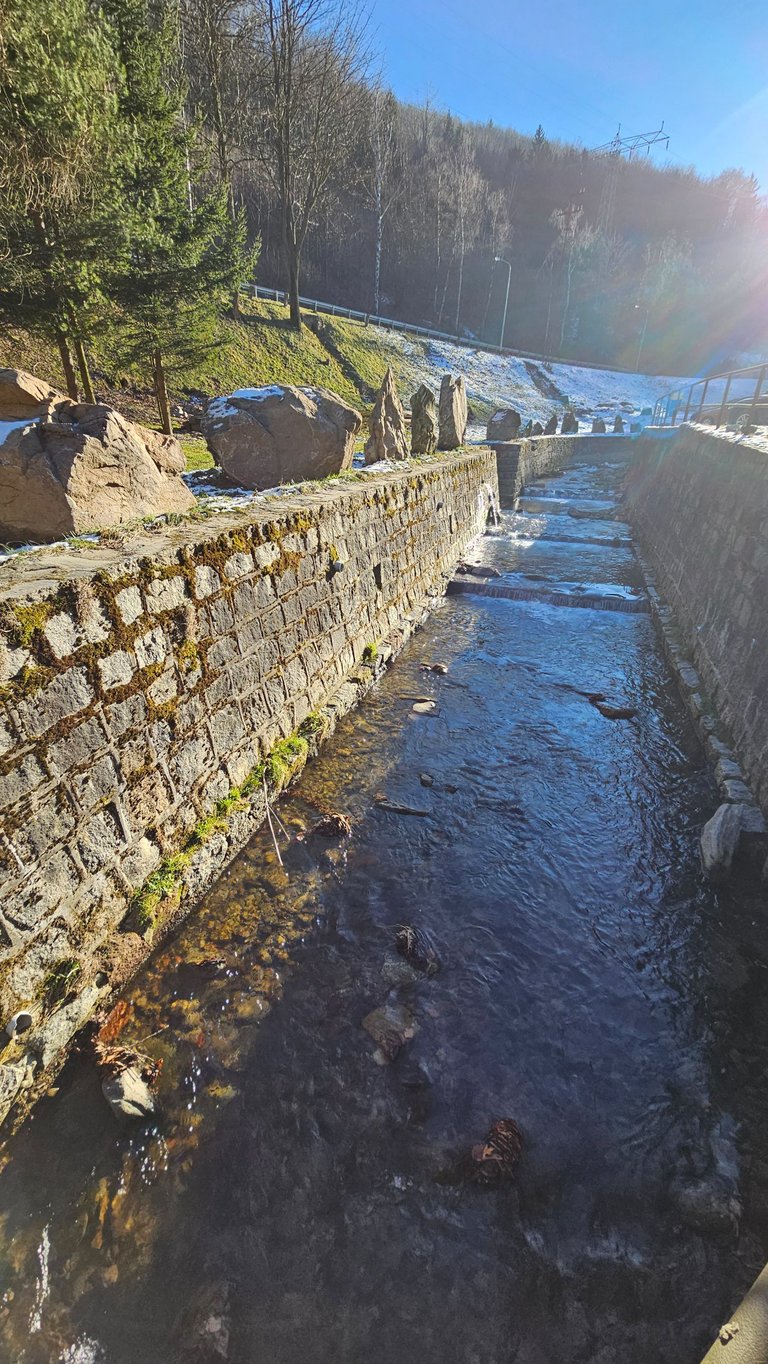
Dla naszej rodziny była to chwila zadumy nad ludzką naturą i tym, co człowiek jest w stanie zrobić drugiemu człowiekowi. Zwiedzanie Sztolni Walimskich było też okazją do rozmowy z dziećmi o historii, empatii i odpowiedzialności.
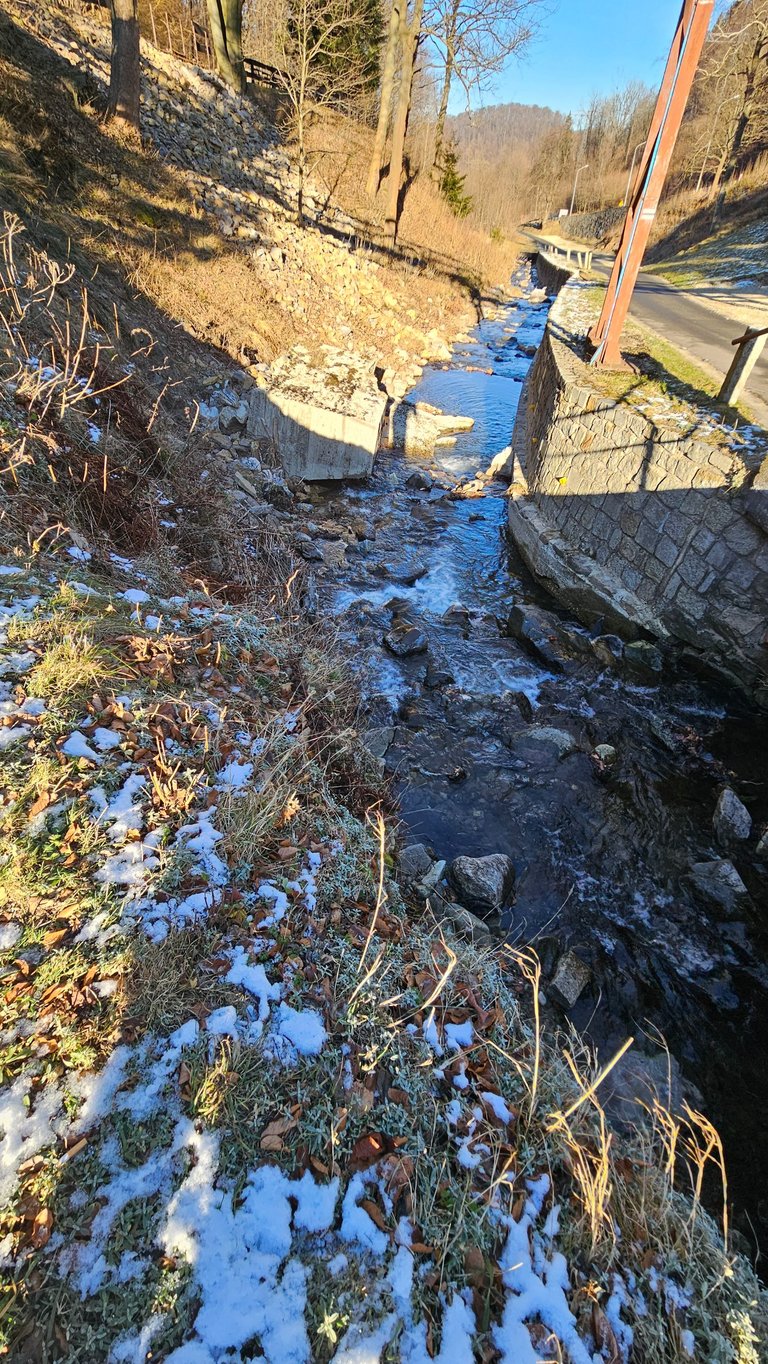
Krajobrazy pełne kontrastów
Po wyjściu ze sztolni mieliśmy chwilę, by odetchnąć i podziwiać piękno otaczającej przyrody. Góry Sowie były pokryte śniegiem, a z górskich zboczy zwisały lodowe sople. Było to jak oddech po ciężarze emocji, które towarzyszyły nam podczas zwiedzania.

Kontrast między surową historią sztolni a pięknem natury był uderzający. Przypominał nam, że nawet w miejscach naznaczonych tragedią można dostrzec piękno świata.
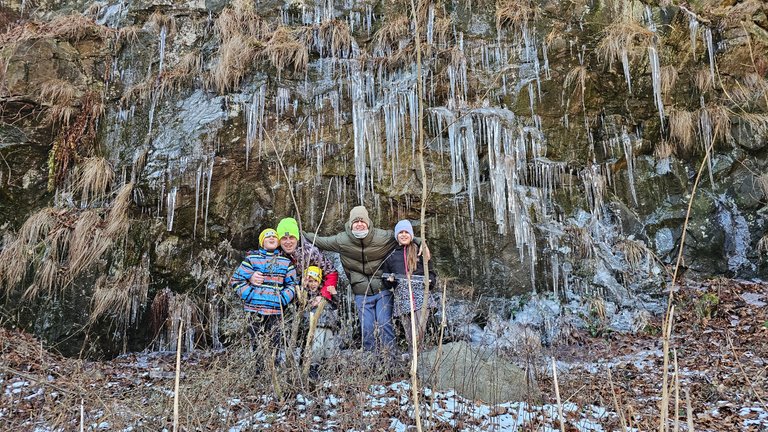
Nasza wyprawa do Sztolni Walimskich była niezwykłym doświadczeniem. To nie była tylko lekcja historii, ale także chwila refleksji nad przeszłością, zaduma nad ludzkim cierpieniem i przypomnienie, jak ważne jest pamiętanie o tych, którzy cierpieli w imię ideologii wojny.
Dzieci zostały pochwalone przez przewodnika za swoje skupienie i zaangażowanie. To był dla nas moment dumy, ale także dowód na to, że nawet najmłodsi mogą zrozumieć i docenić znaczenie takich miejsc.
Zachęcamy każdego, kto ma okazję odwiedzić Sztolnie Walimskie, by zrobił to z otwartym umysłem i gotowością na trudne emocje. To miejsce, które pozwala lepiej zrozumieć przeszłość i uczy, jak ważne jest dbanie o pamięć historyczną.

@tipu curate 8
Upvoted 👌 (Mana: 0/62) Liquid rewards.